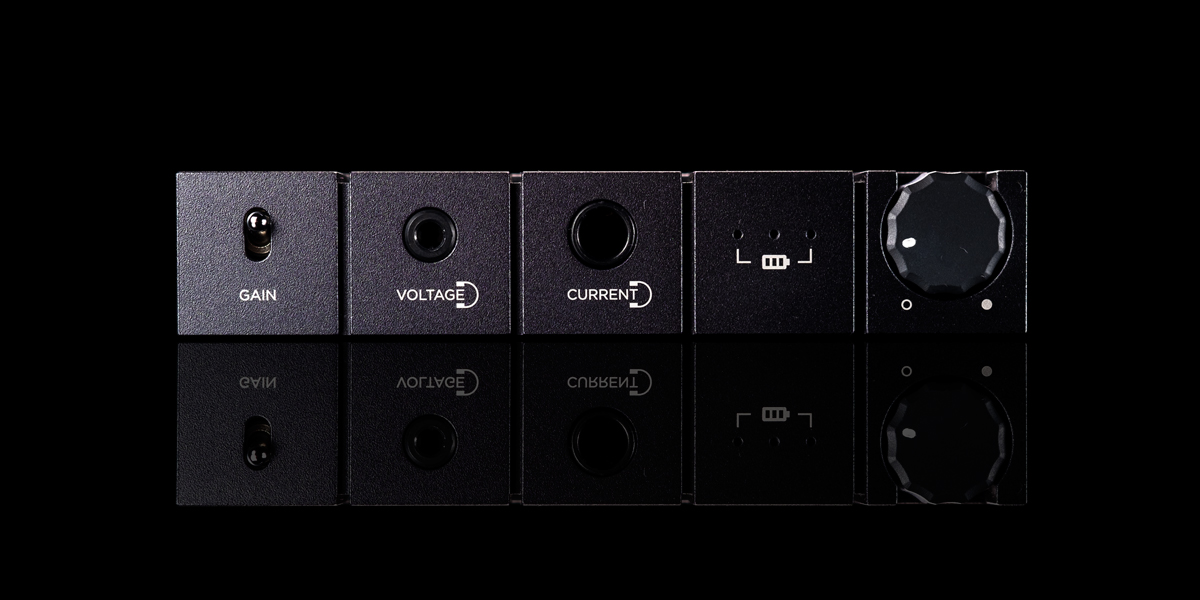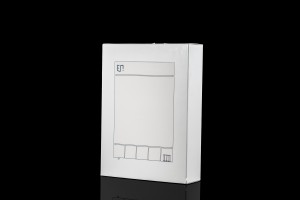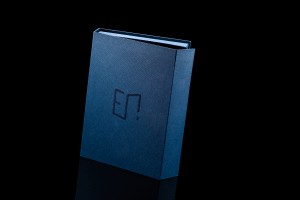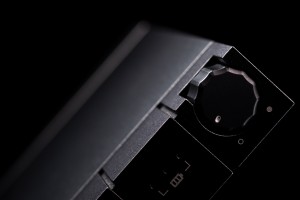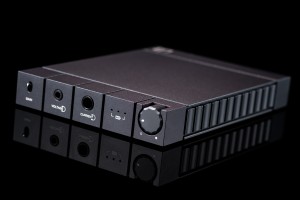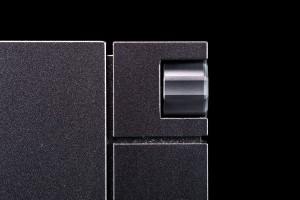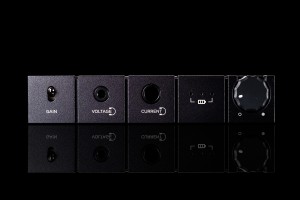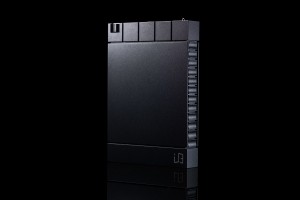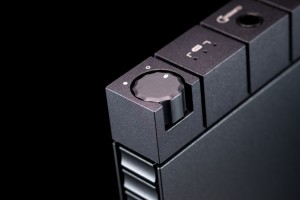The Enleum AMP-23R has been my daily driver for speakers and headphones ever since its arrival. Its smaller sibling Enleum HPA-23RM designed exclusively for cans was launched a while ago and recently sent my way. Enjoy!
Portable might
It’s been three years since the last Enleum story published at HFK. To recap, in 2021 this South Korean audio house founded by Soo In Chae arose on the ashes of his previous company Bakoon International and inherited all its trademark features; minimalist styling, perfectly executed casework, clever current-mode circuitry and brilliant sonics. Tiny footprint and according power output also fit that list. The first Enleum effort named AMP-23R targets clients who rock high-efficiency speakers and pursue fewer quality watts inside neatly styled compact packages. This firstborn product also proved highly gifted on the headphone front. So much so in fact that it had caused quite the stir in the largest headphone forum on the planet. Some 120+ pages in the AMP-23R official thread on Head-fi.org imply just that, which is quite the success considering its retail price and speaker readiness. Just so you know, this community moves really quickly from one public discovery to another no matter how costly or unusual it is. Most such standouts are hot for say several months and then forgotten. Three years past its debut the AMP-23R is still being discussed, so it had to really impress this audience. Rightfully so. It’s as much of a beast with cans as it is with speakers. Soo In knows it all too well. Enleum AMP-23R sounds equally awesome with headphones and speakers because the same highly advanced circuitry handles both these product types. This approach is not unique per se, several other manufacturers do the same. More importantly, it shows that Soo In doesn’t put loudspeakers above cans or vice versa. Over the years he delivered enough hardware groomed for both to support this. This time around we take a detour towards exclusively headphones. His latest effort named Enleum HPA-23RM was designed only for these. The man’s no stranger to this turf and has the necessary know-how to build compactly dressed headfi kit. Several such designs released under his previous banner were excellent on looks, internals and performance. In short, solid products all around and quite the track record to boot. The HPA-23RM is the first portable Enleum and currently the best Soo In can do in that size. The machine’s name unfolds into a HeadPhone Amp, size 2, 3rd gen. internal circuit, reference parts on board and mobile use. High-end on the go then? Quite possibly. It’s a portable AMP-23R for cans after all.
Enleum AMP-23R sounds equally awesome with headphones and speakers because the same highly advanced circuitry handles both these product types. This approach is not unique per se, several other manufacturers do the same. More importantly, it shows that Soo In doesn’t put loudspeakers above cans or vice versa. Over the years he delivered enough hardware groomed for both to support this. This time around we take a detour towards exclusively headphones. His latest effort named Enleum HPA-23RM was designed only for these. The man’s no stranger to this turf and has the necessary know-how to build compactly dressed headfi kit. Several such designs released under his previous banner were excellent on looks, internals and performance. In short, solid products all around and quite the track record to boot. The HPA-23RM is the first portable Enleum and currently the best Soo In can do in that size. The machine’s name unfolds into a HeadPhone Amp, size 2, 3rd gen. internal circuit, reference parts on board and mobile use. High-end on the go then? Quite possibly. It’s a portable AMP-23R for cans after all.
The product arrived in a white cardboard that housed a nice matte crystal teal box with a magnet lock on the side. The top revealed a folded manual card and foamy interior with the key ingredient inside a bag. An external 5V charger was included in a separate package. Enleum HPA-23RM doesn’t need or want any extras considering what it is. This purist fully analog battery-based headphone amp doesn’t feature a DAC, Bluetooth, USB or any other typical digital bits. It’s not for those who see it as crippled and/or outdated because of that. It’s fair to say that these days we don’t get to see as many portable devices of this rare sort than we used to say 10 or 15 years ago. This doesn’t make them any less valid. Headfi enthusiasts appreciate manufacturers who put all the effort into top shelf sound quality dressed in style and compact enough to enjoy it away from a desk. That’s Enleum HPA-23RM in a nutshell. It was designed primarily for such consumers. Today’s Enleum measures 116 x 164 x 22mm (W x D x H) and weighs 730g, so is small yet substantial in hand. The above-mentioned narrow utility makes it a target for those who are on a lookout for a portable amp only, which naturally allows it to exist outside the crowded DAC/amp realm where many dangerous specimens live (Chord Hugo 2, iFi audio iDSD Diablo 2 etc.). Dual Li-Ion cells good up to 2’000 cycles translate into running time up to 5/3 hours on voltage/current outputs, but continuous use is also possible upon connecting a USB C charger included in the set to the HPA-23RM. Its voltage/current headfi outs do 500mW/1W into 30Ω loads and their output impedance is very low and very high respectively. This Enleum sells for €3’000. Interestingly its predecessor Bakoon HPA-21 had the same sticker a decade ago.
Today’s Enleum measures 116 x 164 x 22mm (W x D x H) and weighs 730g, so is small yet substantial in hand. The above-mentioned narrow utility makes it a target for those who are on a lookout for a portable amp only, which naturally allows it to exist outside the crowded DAC/amp realm where many dangerous specimens live (Chord Hugo 2, iFi audio iDSD Diablo 2 etc.). Dual Li-Ion cells good up to 2’000 cycles translate into running time up to 5/3 hours on voltage/current outputs, but continuous use is also possible upon connecting a USB C charger included in the set to the HPA-23RM. Its voltage/current headfi outs do 500mW/1W into 30Ω loads and their output impedance is very low and very high respectively. This Enleum sells for €3’000. Interestingly its predecessor Bakoon HPA-21 had the same sticker a decade ago.
The Enleum HPA-23RM loaner proved as exceptional on looks and assembly as its larger sibling and all other Bakoons I’d sampled. The enclosure milled from one aluminium billet is pointy on edges, so it won’t feel too comfortable in a pocket. Then again, the product is too large to see it as a fully portable device. Although it would remain on my desk, it’s just about small enough to take it i.e. to a hotel and enjoy either with IEMs or mobile cans like Meze 99 Classics. I really dig how multiple cavities and right angles on the HPA-23RM’s minimalist chassis cleverly divide its forehead into five cubed sections and each with something going on. A gain switch (hi and lo) and 3.5/6.3mm voltage/current sockets are self-explanatory. The battery indicator comprised of thee LEDs engages them all either when cells are topped, or when the product is connected to the grid. The ‘volume’ knob adjusts gain and also serves as the on/off switch. Since it’s fully hidden inside its cube, there’s not much space for a finger to rotate it, which is somewhat inconvenient. On the upside, it looks nice and won’t go up and down all by itself when the device sits in a pocket or backpack.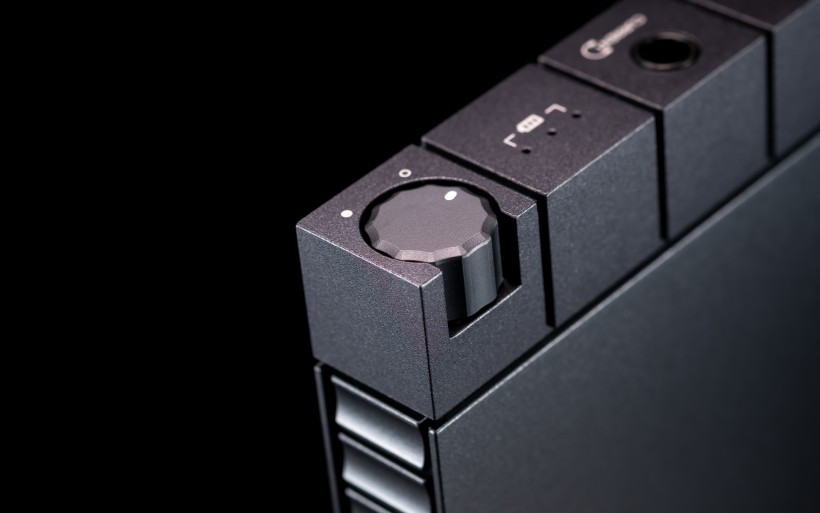 Initially I saw the Enleum’s voltage out on a 3.5mm TRS socket as a con. Most IEMs and portable cans are accordingly terminated, so I see the logic in using this standard instead of yet another 6.3mm output. Since the HPA-23RM isn’t a balanced design, 4.4mm didn’t make sense either. The business end features a USB type C charging port and line inputs on 3.5mm and recessed RCAs with enough clearance to accommodate bulkier interconnects. Clean top and radiators on both cheeks are integral parts of the main enclosure. Since Soo In’s beef with visible bolts is as strong as ever, diving into HPA-23RM’s internals requires undoing several bolts and then removing its underside with four rubber washers. Easy-peasy. That’s what it takes to maintain clean visuals and net three Red Dot design awards along the way.
Initially I saw the Enleum’s voltage out on a 3.5mm TRS socket as a con. Most IEMs and portable cans are accordingly terminated, so I see the logic in using this standard instead of yet another 6.3mm output. Since the HPA-23RM isn’t a balanced design, 4.4mm didn’t make sense either. The business end features a USB type C charging port and line inputs on 3.5mm and recessed RCAs with enough clearance to accommodate bulkier interconnects. Clean top and radiators on both cheeks are integral parts of the main enclosure. Since Soo In’s beef with visible bolts is as strong as ever, diving into HPA-23RM’s internals requires undoing several bolts and then removing its underside with four rubber washers. Easy-peasy. That’s what it takes to maintain clean visuals and net three Red Dot design awards along the way.
I couldn’t see much inside the Enleum loaner, but quite a few things are already known about it. This class A/B current-mode push-pull zero-feedback design incorporates four SMD type Mosfets (two per channel) and as many bipolar Transistors in its output stage. The HPA-23RM’s voltage out engages only Mosfets, while the current drive turns them into drivers for bipolars. The Danish company Aavik did something similar in their I-880 flagship integrated amp priced at €67’000. The Enleum‘s twin output stage means that its headfi outs don’t make identical sound, but there’s more to that. The current socket’s unusually high 2.5MΩ output impedance essentially means a damping factor of zero upon connecting any headphones. The impedance of speakers greatly variates and those which benefit from the current drive are very far and few between. However, most headphones incorporate one transducer per channel and work without crossovers, so their impedance is constant and doesn’t factor when current-mode amps come into play. That makes them more responsive and stable loads than speakers. Some IEMs and heaphones will fancy the HPA-23RM’s high output-Ω current out, while those which don’t can always connect to its 1Ω voltage socket. The Enleum looks and behaves like a regular headphone amp, but in reality this is a power amp with adjustable voltage gain factor. Its unusual discrete current-mode operational amplifier named ENsence features an output resistor which sets this gain, while a potentiometer selects one fixed voltage value from a relay-resistor matrix and like so makes it variable. To simplify, the HPA-23RM’s knob determines signal strength instead of maxing out its level and then trimming it. The newcomer also features the AMP-23R’s simplified JET2 bias controller designed to track thermal shifts and maintain bias level regardless of load and temperature. The 1.2mHz switching PSU and ultra-low-noise voltage regulators for batteries seal the deal.
The Enleum looks and behaves like a regular headphone amp, but in reality this is a power amp with adjustable voltage gain factor. Its unusual discrete current-mode operational amplifier named ENsence features an output resistor which sets this gain, while a potentiometer selects one fixed voltage value from a relay-resistor matrix and like so makes it variable. To simplify, the HPA-23RM’s knob determines signal strength instead of maxing out its level and then trimming it. The newcomer also features the AMP-23R’s simplified JET2 bias controller designed to track thermal shifts and maintain bias level regardless of load and temperature. The 1.2mHz switching PSU and ultra-low-noise voltage regulators for batteries seal the deal.
The plan of what to do with the Enelum HPA-23RM was formed long before its arrival. Although fueled by twin 18650 batteries, semi portable and stripped from speaker outs, this still is the AMP-23R’s more compact offspring that promises us similar sonic aesthetics. Since both these products are fluent in the headfi language, comparing them side by side as headphone amps was the clear and only way to go. Ever since its arrival the AMP-23R has been my go-to device for this purpose. It’s also the most accomplished such a device I know by far. The two Enleums’ tussle was a breeze to set up. Both set into high gain connected to the LampizatOr Pacific DAC via LessLoss entropic-processed RCAs, while the Innuos Statement handled server/storage duties. HifiMan Susvara widely considered as a bitch to drive was my load of choice and the only one I had at my disposal. That wasn’t a problem in the slightest. If today’s Enleum can do the justice to the Susvara just as its older kin can, it’ll work with pretty much everything out there on the market, with a handful of exotic exceptions in dire need of niche amps useful only for them, i.e. electrostats and Raal’s Requisite range. To move between the South Korean contestants I had to reconnect LessLoss RCAs and that was it.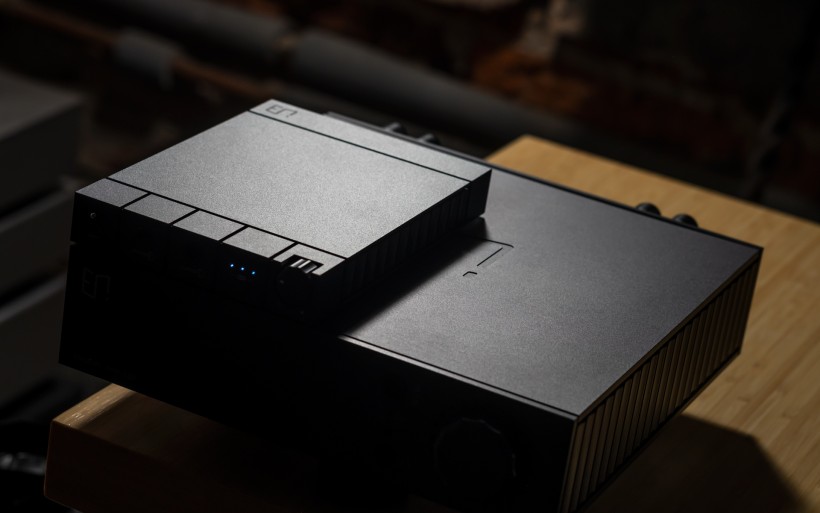 Considering the Enleum HPA-23RM’s roots, I’ll first explain how Soo In’s Enleum AMP-23R and its earlier version (named AMP-13R and sold under a different brand) already had me at hello. In late 2019 the latter on the job with sound|kaos Libération speakers very easily outclassed my two previous amps. The twice as dear Trilogy 925 integrated machine was beaten to a pulp on openness and agility, while the inherently quick spatially mighty Kinki Studio EX-M1 sounded far drier, more lit up, nervous, shinier and forward. In spite of lesser power than the Kinki, Soo In’s compact design with its blacker backdrop and lower tonal center still felt heftier and very much eager to portray dynamic contrasts in large orchestral music as wide as they were. On such tasks it was fully awake, vigorous, energetic and all in all spectacular without a hint of sluggishness embedded. Its lightning-fast reaction time combined with superb textural qualities, spot on tone, silly good imaging, off-the-charts momentum and overall ease secured the easy win.
Considering the Enleum HPA-23RM’s roots, I’ll first explain how Soo In’s Enleum AMP-23R and its earlier version (named AMP-13R and sold under a different brand) already had me at hello. In late 2019 the latter on the job with sound|kaos Libération speakers very easily outclassed my two previous amps. The twice as dear Trilogy 925 integrated machine was beaten to a pulp on openness and agility, while the inherently quick spatially mighty Kinki Studio EX-M1 sounded far drier, more lit up, nervous, shinier and forward. In spite of lesser power than the Kinki, Soo In’s compact design with its blacker backdrop and lower tonal center still felt heftier and very much eager to portray dynamic contrasts in large orchestral music as wide as they were. On such tasks it was fully awake, vigorous, energetic and all in all spectacular without a hint of sluggishness embedded. Its lightning-fast reaction time combined with superb textural qualities, spot on tone, silly good imaging, off-the-charts momentum and overall ease secured the easy win.
Although at first the Kinki integrated felt more explosive and largely primed for fun and excitement, in the long run this behavior led to fatigue. Meanwhile, Soo In’s product remained pleasantly relaxed, far smoother and substantial on top of its strongly pronounced high-RPM virtues to communicate sonic maturity and higher-tiered performance across the board. This device was as vivacious, tonally ripe, pleasantly substantial and hydrated as it was dynamically gifted, elastic, open, effortless, immediate, composed, spatially sorted, nuanced, illuminated and articulated. All these traits rarely blend in equal proportions. Some are in fact mutually exclusive perks. Soo In’s recipe had them perfectly dosed and artfully balanced, while sporty sound generously infused with triode-like flavor was the rarely heard brilliant effect. That was the key takeaway. The AMP-13R loaner sent my way many years ago quickly secured the position of the very best audio hardware I’d sampled regardless of type or price. I cherished this tiny little thing more than my significantly more expensive DAC, amps, line stages, speakers and accessories without exceptions. Pursuits of similarly voiced and as accomplished amplifiers eventually led me to the Nagra Classic INT integrated machine and AGD Production Vivace monos, so two far dearer standouts. Soo In’s compact design was undefeatable in its price range. With loads suitable for its 25wpc output it also easily kept up with way costlier sparring partners. In short, it was a silly good highly unrealistic product, especially considering its tiny frame. Fast forward to early 2022, when the Enleum CEO sent over its successor baptized Enleum AMP-23R. Although the two siblings shared topology, circuitry and pretty much identical sound profiles, the newcomer still had the upper hand on several counts.
The AMP-13R loaner sent my way many years ago quickly secured the position of the very best audio hardware I’d sampled regardless of type or price. I cherished this tiny little thing more than my significantly more expensive DAC, amps, line stages, speakers and accessories without exceptions. Pursuits of similarly voiced and as accomplished amplifiers eventually led me to the Nagra Classic INT integrated machine and AGD Production Vivace monos, so two far dearer standouts. Soo In’s compact design was undefeatable in its price range. With loads suitable for its 25wpc output it also easily kept up with way costlier sparring partners. In short, it was a silly good highly unrealistic product, especially considering its tiny frame. Fast forward to early 2022, when the Enleum CEO sent over its successor baptized Enleum AMP-23R. Although the two siblings shared topology, circuitry and pretty much identical sound profiles, the newcomer still had the upper hand on several counts.
The Enleum’s sound felt more anchored and not as obsessed with speed and outlines. This was particularly obvious on Eivør Pálsdóttir’s track “Verð Mín”, where her voice struck me as weightier, fleshier and closer, while bass jabs just behind that vocal line were stronger. The AMP-23R’s extra muscularity rendered its predecessor more explicit, light-footed and somewhat innocent if not skinnier. This sufficed to map the gutsier sensibly more powerful Enleum as the more versatile product that had my vote. On “Dios Astrapaiou” by Daemonia Nymphe the newcomer reinforced its win by sounding a touch darker than the predecessor yet sensibly larger to boast increased spatial intensity and immersion. Interestingly the Enleum didn’t have to trade in anything to get there. It just parked the extra gravitas atop quickness and tactility it already had plenty of. I appreciated this transition particularly because it included nothing other than pure gains.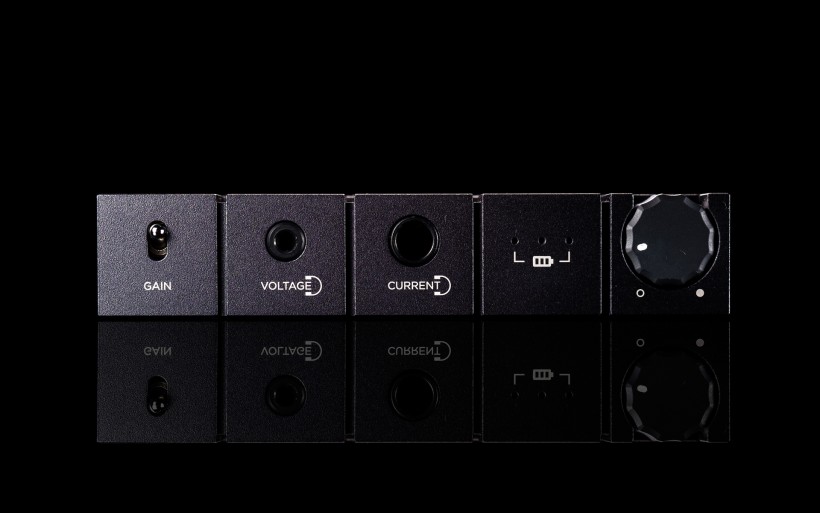 To my ears the Enleum AMP-23R’s ability to increase spatial mass without penalizing its radiant well-pronounced core marked the clear progress over its older sibling. The former’s greater richness and heft atop its quicksilvery transparent investigative psych profile most likely were the beneficial side-effects of its lower noise floor. The Enleum also pushed sensibly more air my way to feel more impactful and bolder, which was quite the achievement on its own right considering its petite footprint. Simply put, it sounded like a more advanced bolder version of the high-tiered product I already considered as second to none. I applauded Soo In for all the effort he’d put into refining his circuit by a noticeable margin. The most interesting part is that the signal path for speakers and headphones inside the Enleum AMP-23R is exactly the same. Should you wonder how this amp fares with cans, the story above applies in 100%. Really.
To my ears the Enleum AMP-23R’s ability to increase spatial mass without penalizing its radiant well-pronounced core marked the clear progress over its older sibling. The former’s greater richness and heft atop its quicksilvery transparent investigative psych profile most likely were the beneficial side-effects of its lower noise floor. The Enleum also pushed sensibly more air my way to feel more impactful and bolder, which was quite the achievement on its own right considering its petite footprint. Simply put, it sounded like a more advanced bolder version of the high-tiered product I already considered as second to none. I applauded Soo In for all the effort he’d put into refining his circuit by a noticeable margin. The most interesting part is that the signal path for speakers and headphones inside the Enleum AMP-23R is exactly the same. Should you wonder how this amp fares with cans, the story above applies in 100%. Really.
There are several reasons why the Enleum is particularly useful with Susvara. First of all, in high gain it outputs 4 watts into this 60Ω load and that’s plenty enough. Secondly, this amp makes Susvara not only loud, but also authoritative and very generous on bass amount, shove, crack and reach. It in fact does so damn well in this regard that the odds of a standalone speaker amp being any better here are rather slim. Although feeding Susvara from speaker taps of i.e. a 200wpc integrated amp may seem excessive, this is in fact a valid route to take and rather popular in the headphone community. I already had my say on the matter here. And lastly, the AMP-23R is a zero-feedback class A design that sounds terrific with any matched cans or speakers fit for its power output and happy about voicing that’s not thick, excessively warm and syrupy. Enleum AMP-23R works so well with Susvara also because it allows these cans to fully flaunt their personality and show what they’re truly capable of. The ability to cover all audible bases on a commensurably high level and leave any obvious weaknesses at the door is their sharpest suit. It’s fair to say that some headphones stage larger, others are juicier and quite a few pack even harder punch, but always at a cost somewhere else. Meanwhile, Susvara’s exceptionally balanced sound makes them perfect do-it-all cans. This high-tiered versatility is also the very reason why this is a keeper product. The tricky part is the amp. If it’s not matched, then the flagship HifiMan sounds okay at best; without properly developed bass foundation and below rightfully high expectations as per its sticker. In short, the Enleum AMP-23R turns these cans into a keeper and packs a fantastic speaker amp should you ever wish to explore that rabbit hole. For what it’s worth, the AMP-23R has been working like a charm for me and it’s not going anywhere. I use it as much as my big hybrid preamp and twin 55wpc class A monos.
Enleum AMP-23R works so well with Susvara also because it allows these cans to fully flaunt their personality and show what they’re truly capable of. The ability to cover all audible bases on a commensurably high level and leave any obvious weaknesses at the door is their sharpest suit. It’s fair to say that some headphones stage larger, others are juicier and quite a few pack even harder punch, but always at a cost somewhere else. Meanwhile, Susvara’s exceptionally balanced sound makes them perfect do-it-all cans. This high-tiered versatility is also the very reason why this is a keeper product. The tricky part is the amp. If it’s not matched, then the flagship HifiMan sounds okay at best; without properly developed bass foundation and below rightfully high expectations as per its sticker. In short, the Enleum AMP-23R turns these cans into a keeper and packs a fantastic speaker amp should you ever wish to explore that rabbit hole. For what it’s worth, the AMP-23R has been working like a charm for me and it’s not going anywhere. I use it as much as my big hybrid preamp and twin 55wpc class A monos.
As for this report’s main dish, it sounds in 90% just like the AMP-23R. It’s really that simple and hardly any surprising. These two products share their topology and were designed by the same skilled team, so I honestly didn’t expect anything else. Then again, a product meant purely for cans/IEMs and voiced in the ballpark of the awesome AMP-23R was the manufacturer’s primary goal. After hearing it for the first time with Susvara I only smiled. With that notorious load the petite Enleum newcomer clearly had the larger kin’s DNA. Upon setting it in high gain and its ‘volume’ knob at 13’00”, it was as controlling, spatially liberated and highly gifted on bass. This was the clear indication that the HPA-23RM was as muscular, authoritative and expertly groomed for that kind of job. That in combination with all the sonic virtues it inherited from the AMP-23R already made it a winner in its class. Upon comparing these two with Susvara I chuckled quite a lot and for a good reason. When these cans come into play, on sheer sonic excellence and control the compact latter easily outmatches many way larger and dearer speaker amps. The significantly smaller HPA-23RM follows this exact suit without fail. Now let that sink in.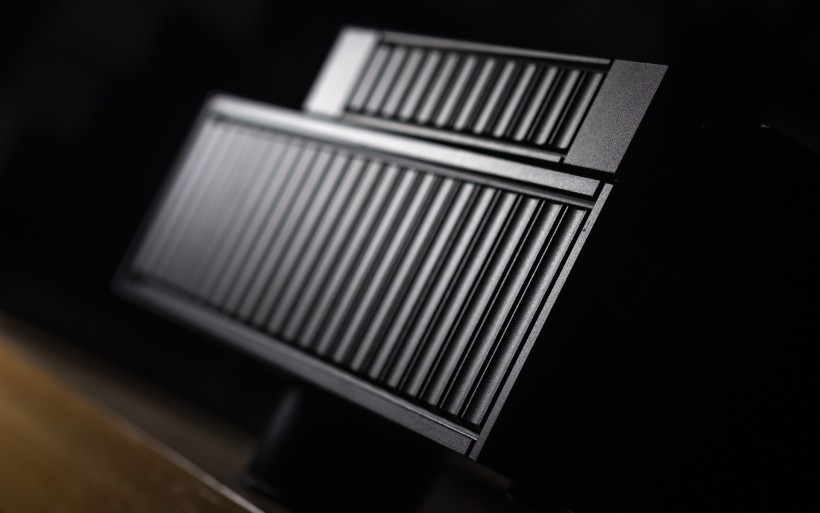 The Enleum HPA-23RM’s and its larger sibling’s controlling skills over Susvara proved in 100% alike to my ears, even in spite of the former’s lesser power output. Their sonic profiles however overlap in 90%. The remaining 1/10th is the difference between the sound the newcomer’s two headphone outs produce. Just to be clear, both sockets share the same flavor, but each branches out from there a bit. The product’s voltage out has half the power, so Susvara cans connected to it sound quieter and also noticeably more colorful, relaxed, mellow, atmospheric and softer, but at a cost of lesser contour and traction. I was told that this headfi out works well with dynamic cans and IEMs. Meanwhile, the manufacturer deems the current socket as particularly useful for planar-magnetic headphones such as Susvara. It didn’t take me long to understand why. My primary cans connected to that output sounded icier, splashier, more impactful, fresh, energized, instantaneous, articulated, focused and dynamically willing, but as smooth as ever and at a cost of lesser romanticism. This was my personal ticket and yours may be too if you value high horsepower more than comfy seats. I see more than one scenario where the voltage socket would really come in handy and become the arguably better choice, just not with Susvara. I consider the big Enleum’s headfi port as quite special and even more so upon comparing it to the newcomer’s arsenal. The AMP-23R with flagship HiFiMans packed all the torque of the HPA-23RM’s current out atop relaxation and tonal intensity of its voltage drive, as if it had means to combine the primary virtues and flavor of the latter’s both outputs. This however doesn’t impact my conclusion. The two products largely sounded the same and the difference between them was really small with top HifiMan planars.
The Enleum HPA-23RM’s and its larger sibling’s controlling skills over Susvara proved in 100% alike to my ears, even in spite of the former’s lesser power output. Their sonic profiles however overlap in 90%. The remaining 1/10th is the difference between the sound the newcomer’s two headphone outs produce. Just to be clear, both sockets share the same flavor, but each branches out from there a bit. The product’s voltage out has half the power, so Susvara cans connected to it sound quieter and also noticeably more colorful, relaxed, mellow, atmospheric and softer, but at a cost of lesser contour and traction. I was told that this headfi out works well with dynamic cans and IEMs. Meanwhile, the manufacturer deems the current socket as particularly useful for planar-magnetic headphones such as Susvara. It didn’t take me long to understand why. My primary cans connected to that output sounded icier, splashier, more impactful, fresh, energized, instantaneous, articulated, focused and dynamically willing, but as smooth as ever and at a cost of lesser romanticism. This was my personal ticket and yours may be too if you value high horsepower more than comfy seats. I see more than one scenario where the voltage socket would really come in handy and become the arguably better choice, just not with Susvara. I consider the big Enleum’s headfi port as quite special and even more so upon comparing it to the newcomer’s arsenal. The AMP-23R with flagship HiFiMans packed all the torque of the HPA-23RM’s current out atop relaxation and tonal intensity of its voltage drive, as if it had means to combine the primary virtues and flavor of the latter’s both outputs. This however doesn’t impact my conclusion. The two products largely sounded the same and the difference between them was really small with top HifiMan planars.
The Enleum AMP-23R’s styling, tiny footprint, flawless put-togetherness, luxurious overall feel and top shelf sonics with speakers and headphones make it a brilliant product that deserves praise. The Enleum HPA-23RM fits the same profile and is just as impressive. It works wonders with Susvara, runs barely warm and is usable on the go. It’s also noticeably more compact, features two distinct sonic profiles to cover a wide gamut of loads and is priced at half its sibling’s sticker, which I think is reasonable considering that it doesn’t do speakers. Should you ever wish to replace its twin 18650 cells, these are widely available and nowhere near as costly as customized batteries used in other portable audio devices. I can’t fault the Enleum HPA-23RM for anything really. This portable effort is as accomplished as the AMP-23R and brilliant where it matters most. Kudos to Soo In Chae for compressing his signature tech into a package this petite and fit to handle difficult companions this expertly!
Associated Equipment:
- Amplifier: Trilogy 995R, FirstWatt F7, Enleum AMP-23R
- DAC: LampizatOr Pacific (KR Audio T-100 / Living Voice 300B + KR Audio 5U4G Ltd. Ed.)
- Speakers: Boenicke Audio W11 SE+, sound|kaos Vox 3afw
- Transport: Innuos Statement, fidata HFAS1-S10U
- Preamplifier: Trilogy 915R, Thöress DFP
- Speaker cables: Boenicke Audio S3, LessLoss C-MARC
- Headphones: HifiMan Susvara
- Speaker signal conditioning: LessLoss Firewall for Loudspeakers, Boenicke ComDev
- Anti-vibration conditioning: 12x Carbide Audio Carbide Bases (under DAC, preamp and speakers)
- Interconnects: LessLoss Entropic Process C-MARC, Boenicke Audio IC3 CG
- Power components: Gigawatt PC-3 SE EVO+/LC-3 EVO, LessLoss C-MARC, LessLoss Entropic Process C-MARC, Boenicke Audio Power Gate, ISOL-8 Prometheus
- USB components: iFi audio Mercury3.0
- Rack: Franc Audio Accesories Wood Block Rack 1+3
- Network: Fidelizer EtherStream, Linksys WRT160N
- Music: NativeDSD
Retail prices of reviewed components in EU (incl. VAT):
- Enleum HPA-23RM: €3’000
Manufacturer: Enleum


